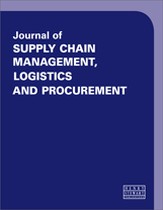Navigating the US truckload capacity cycle: Where are freight rates headed and why?
Abstract
The US truckload transportation market, like many markets, can be characterised as an ongoing rebalancing between supply and demand — or in this case, the number of trucks (and drivers) to haul goods and the demand for those trucks to meet current market demand. This creates a cycle that swings from relative capacity shortage, where there is more demand relative to supply which drives market rates higher, to relative capacity surplus, where there is more supply available relative to demand which drives rates lower. The term ‘relative’ is an important one as the simultaneous rate of change on both sides of the marketplace ultimately drives market rate activity. But as this article will go on to describe, the simultaneous rates of change in supply and demand are rarely in a state of relative equilibrium. It is this dynamic that creates a recurring pricing cycle observed to display at least some level of consistency and can therefore be used to predict the future — but only if you understand the past and the present. In other words, the US truckload market operates as a machine with certain mechanical properties that tend to produce similar outputs given similar inputs. The real world is governed by economic and geopolitical uncertainty, shifting technology and regulatory landscapes, and human psychology that often drives irrational behaviour, so those mechanical properties and input signals can be exceedingly difficult to separate from the noise. However, with enough historical transaction data, market visibility, and insight, this paper proposes that it can be done; the past can be used to predict the future with at least some level of directional certainty, as long as the fundamental structure of the marketplace remains intact.
The full article is available to subscribers to the journal.
Author's Biography
Chris Pickett is Chief Strategy Officer at Coyote Logistics, a leading provider of non-asset based third-party logistics (3PL) solutions across North America and Europe. Chris is responsible for helping the Coyote leadership team develop, evolve, and execute an enterprise growth strategy geared toward leveraging Coyote’s unique operating advantages across an increasingly dynamic global market and competitive landscape. He is also responsible for all activities related to North American Sales, Marketing, Operations, Supply Chain Engineering and Pricing Strategy — ensuring that all are aligned to identify, implement and innovate capacity, process and technology solutions for shippers across the global Coyote network. Before joining Coyote in 2006, Chris served in various strategy development and consulting roles at Adjoined Consulting (now Capgemini), Agile Software Corp. (now Oracle), Electron Economy (now Viewlocity) and Andersen Consulting (now Accenture). Throughout his career, Chris has architected, implemented, and managed diverse supply chain (SC) management and customer service-related projects for a variety of global market leaders in the food and beverage, pharmaceutical, telecommunications, and consumer technology sectors. He earned a B.S. in Industrial & Systems Engineering from Virginia Tech, an M.Eng. in Logistics from MIT, and an MBA from Georgia Tech. Founded in 2006 and headquartered in Chicago, Coyote Logistics, LLC, a UPS company, is a leading 3PL service provider in North America and Europe. Coyote provides truckload, less-than-truckload, intermodal and cross-border brokerage and transportation management services to more than 14,000 shippers utilising a network of 50,000 carriers. Coyote became a UPS company in August 2015, adding UPS asset utilisation, air freight, ocean freight, customs brokerage and much more to its portfolio of services. Coyote is a proud philanthropic supporter of St. Jude Children’s Research Hospital, for which has raised more than $2.3m in seven years.
Citation
Pickett, Chris (2018, June 1). Navigating the US truckload capacity cycle: Where are freight rates headed and why?. In the Journal of Supply Chain Management, Logistics and Procurement, Volume 1, Issue 1. https://doi.org/10.69554/NESY1741.Publications LLP
